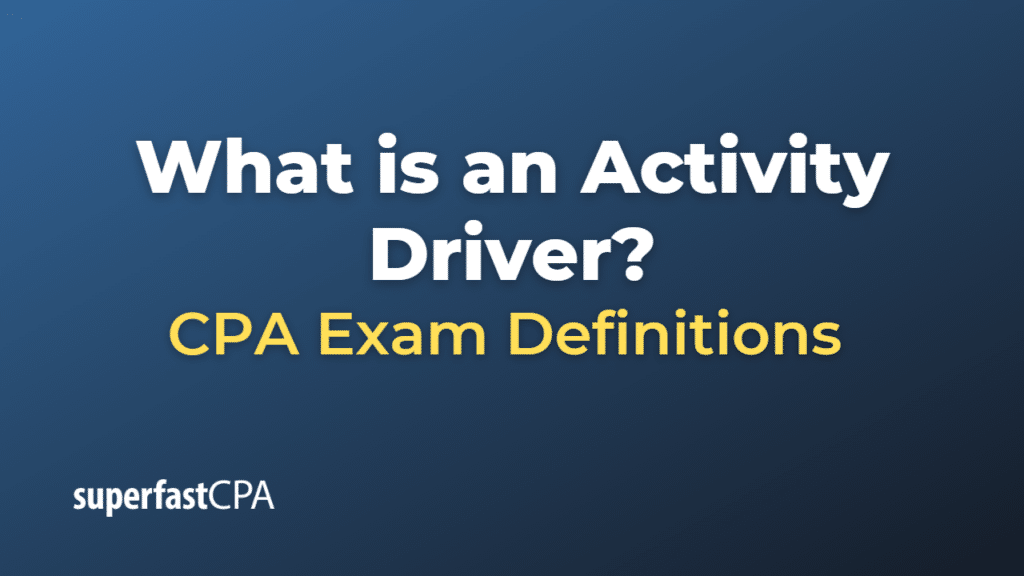Activity Driver
An activity driver, also known as a cost driver, is a factor that influences or causes changes in the costs associated with an activity in a business process. Activity drivers are used in activity-based costing (ABC) to assign overhead costs to products or services based on the resources consumed. They help identify the relationship between the cost of an activity and the factors that drive that cost.
Activity drivers can be classified into two categories:
- Unit-level drivers: These drivers are related to individual units of products or services. They vary directly with the volume of production. Examples include the number of units produced, direct labor hours, or machine hours.
- Non-unit-level drivers: These drivers are related to groups of products or services and do not vary directly with the volume of production. Examples include the number of setups, the number of production runs, or the number of purchase orders.
Identifying the appropriate activity driver is crucial for accurately allocating costs to products or services and understanding the true cost structure of a business. By doing so, businesses can make better-informed decisions regarding pricing, resource allocation, and process improvement.
Example of an Activity Driver
Here’s an example of activity drivers in a manufacturing company:
Assume a manufacturing company produces two different types of widgets: Type A and Type B. The company uses an activity-based costing (ABC) system to allocate overhead costs to these two products. The overhead costs include the costs of machine setup and machine maintenance.
- Machine setup costs: These costs are related to preparing the machines for production runs. In this case, the activity driver is the number of setups. Assume there were 20 setups for Type A widgets and 30 setups for Type B widgets. If the total machine setup cost is $50,000, the cost per setup would be $50,000 / (20 + 30) = $1,000. Therefore, $20,000 would be allocated to Type A widgets (20 setups x $1,000), and $30,000 would be allocated to Type B widgets (30 setups x $1,000).
- Machine maintenance costs: These costs are related to maintaining the machines during production. The activity driver for this cost is machine hours. Assume the machines used for producing Type A widgets ran for 2,000 hours, while machines used for Type B widgets ran for 3,000 hours. If the total machine maintenance cost is $25,000, the cost per machine hour would be $25,000 / (2,000 + 3,000) = $5. Therefore, $10,000 would be allocated to Type A widgets (2,000 hours x $5), and $15,000 would be allocated to Type B widgets (3,000 hours x $5).
By using activity drivers (number of setups and machine hours) to allocate overhead costs, the company can accurately determine the cost structure of each product type and make informed decisions about pricing, resource allocation, and process improvements.













